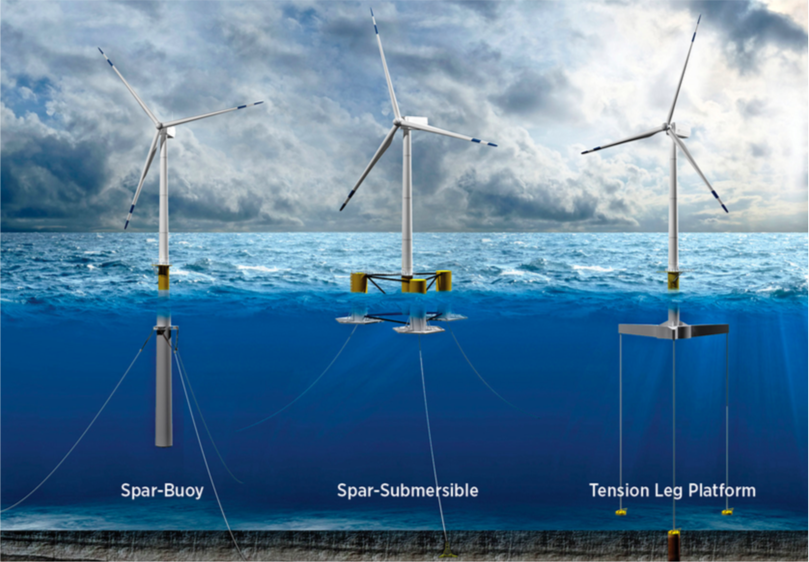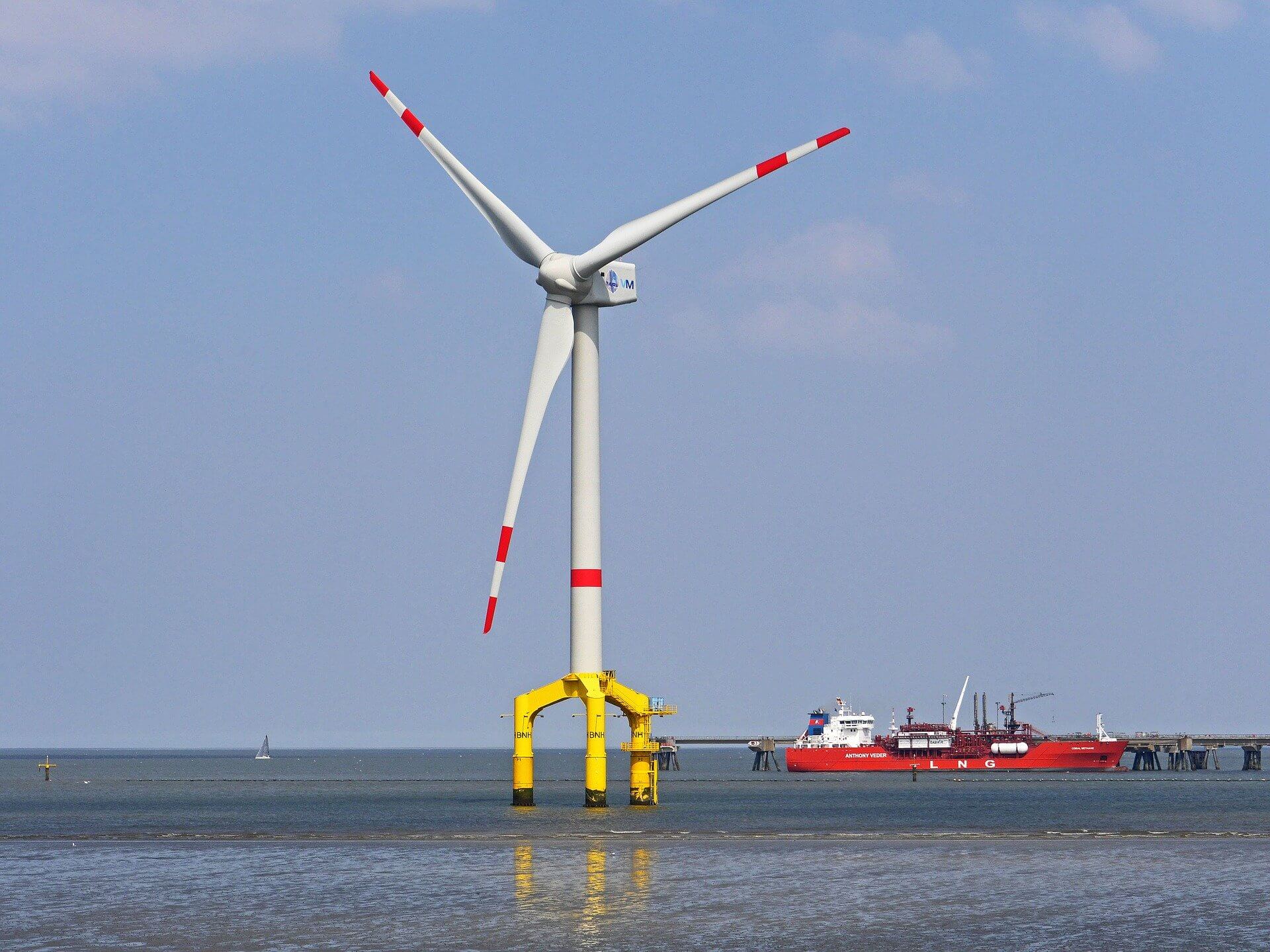Offshore Wind Energy
Offshore Wind Energy is gaining more interest by a lot of people mainly because the technology is improving, and constraints are falling apart.
Offshore wind power as proven to be more efficient than onshore wind. The wind speed offshore is more consistent, not only in terms of velocity but also in terms of direction. In the ocean, the wind is usually stronger during the day due to the bigger temperature difference between the sea and the land. This bigger output comes in a time where people need energy and are more active. There is also another important factor which is the wind turbulence around the blades that is much lower than in onshore wind plants. All this combined lead to better outputs and reduced stress on offshore wind towers than in onshore. Of course, this is true but there are other factors to take into account.
Onshore wind farms have a lot of environmental concerns. Their blades affect the animals nearby and they also produce noise pollution plus visual pollution. If they are offshore those points are not a problem. First, because no one can see or ear the towers if they are distant from the coast and concerning the sea animals, the protection area that is created with the towers is a protected area also for the animals inside the water.
These advantages towards offshore wind power are very important and the industry is adapting their products towards the offshore conditions. To better use the wind speed in the ocean, some parts of the tower need to be changed and one of them is the blades. The tower blades are bigger, and the energy output is also greater. Today there are towers with 220m of rotor. Those bigger blades are not so easy to create because when we increase the blades, they will become more flexible and create more vibration. That vibration is a big problem for equipment that is always working and is connected to a gearbox and a generator. The towers are also getting taller, with heights above 250m, but that is also a concern because it will put more stress on the internal mechanisms requiring new approaches for the conversion of the torque into energy. A taller tower means also a bigger challenge on the foundations, and in-depth waters it becomes even more difficult.
When offshore wind exploration started, the towers were connected to the seabed, with no more than 50m of depth. To allow access to deeper sites, floating foundations started to appear. Those foundations besides more flexible give also the possibility to assembly everything onshore and transport after to the final place. The technology beyond those foundations is already known and proved by the oil and gas sector. There are 3 main concepts for the floating foundations, the spar-buoy, semi-submersible, and the tension leg-platform.

All the foundation solutions presented were already proved on the water with real installations around the world. There are pros and cons for each one of them depending on the wave-induced motions, the ease of doing and of course the costs associated with each one. The semi-submersible system is the one with more use in the last years and can easily transport all the assembly to the site where the turbine will be. It was the solution used in Portugal for the Windfloat Project with Repsol and EDP.

The offshore wind farms are still subject to a lot of innovation work in order to reduce the costs associated with it like it was reduced some years ago in the onshore wind farms. The main developments are made in the foundation and exploitation of the offshore conditions and those developments are being made by small engineering companies like SLEFTY. It is still necessary to do a lot of studies, designs, and tests to get a more mature solution which will lead to a better return on investment and more attractiveness.
In order to get more and better solutions outside, some markets with special conditions must put a step forward and lead the investment. Markets with high energy costs, deep water coastlines and lack of other possibilities to produce energy must be the ones investing at this development stage. Engineering teams must embrace the opportunity and focused on cost and risk reduction during all the project’s lifetime.
Sources and images:
- EDP Offshore Wind, https://www.edp.com/en/offshore-wind
- Floating Foundations: A Game Changer for Offshore Wind Power, https://www.irena.org/-/media/Files/IRENA/Agency/Publication/2016/IRENA_Offshore_Wind_Floating_Foundations_2016.pdf
- Taller, faster, better, stronger: Wind towers are only getting bigger, http://theconversation.com/taller-faster-better-stronger-wind-towers-are-only-getting-bigger-120492
- Haliade -X 12MW OffShore Wind Platform, https://www.ge.com/renewableenergy/wind-energy/offshore-wind/haliade-x-offshore-turbine
- Wind Energy in the Mediterranean Spanish ARC: The Application of Gravity Based Solutions, https://www.frontiersin.org/articles/10.3389/fenrg.2019.00083/full
- https://www.bloomberg.com/news/articles/2020-01-03/floating-wind-farm-starts-generating-power-off-portugal-s-coast


